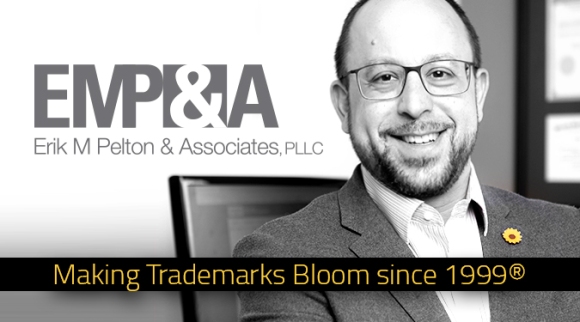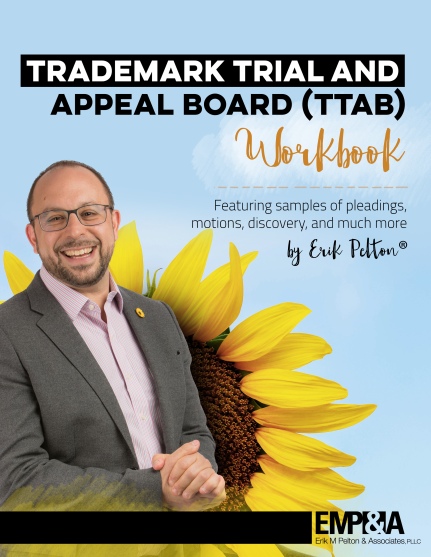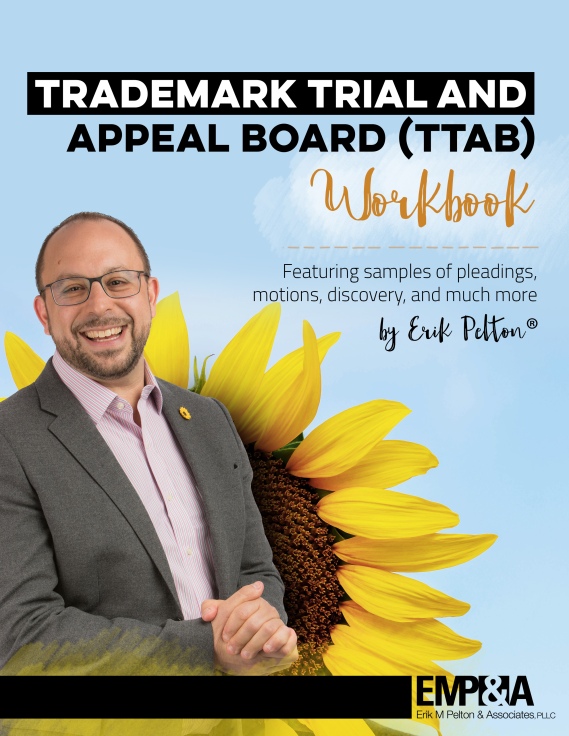A trademark opposition is a formal dispute filed against a trademark application at the USPTO. Former USPTO examiner Erik Pelton discusses important details about these disputes in this video and explains the value of experience counsel.
A trademark opposition is a formal dispute filed against a trademark application at the USPTO. Former USPTO examiner Erik Pelton discusses important details about these disputes in this video and explains the value of experience counsel.
I have received multiple requests and inquires related to the materials I have shared about TTAB hearing and what to expect at them and how to prepare. My firm and I have argued dozens of cases before the Trademark Trial and Appeal Board. Here are some details about the mechanics, strategies, and tips surrounding oral hearings in Trademark Trial and Appeal Board (TTAB) cases of both ex parte appeals and inter partes proceedings.
Mechanics of a TTAB Hearing
Practical Tips
Gauging the Judges
General Hearing Etiquette
outside of a January, 2019 TTAB hearing
A trademark opposition is a formal dispute filed against a trademark application at the USPTO. Former USPTO examiner Erik Pelton discusses important details on these disputes in this video and explains the value of experience counsel.
For more about trademark oppositions and my services, visit my website.

The docket of a TTAB Opposition or Cancellation is complicated. There are many dates and deadlines involved, and they are connected to each other. Some are listed in the institution order, but several key days are not.
*Disclaimer: This is a guideline only. As of November 2018. Calculate and check all docket dates on your own, and compare with TTAB’s initial docketing order, and the current rules, for any particular proceeding(s). Also note that counter-claims will add certain deadlines and periods not in this list.
| TTAB Docket Event | Days from Beginning Date of TTAB Filing | Days from Previous TTAB Docket Event |
| Opposition / Cancellation Filed | 0 | – |
| Answer Due | 40 | 40 |
| Deadline to Request Board Participation in Discovery Conference | 60 | 20 |
| Discovery Conference Deadline | 70 | 10 |
| Discovery Opens | 70 | – |
| Deadline to File A Motion for Sanctions Re: Discovery Conference | 99 | 29 |
| Initial Disclosures Due | 100 | 1 |
| Deadline to Serve Discovery – 31 days prior to close of Discovery period | 219 | 119 |
| Expert Disclosures Due | 220 | 1 |
| Discovery Closes | 250 | 30 |
| Rebuttal Expert Disclosures Due | 250 | – |
| Deadline to File Motion to Compel Expert Disclosures | 250 | – |
| Plaintiff’s Pre-Trial Disclosures Due | 295 | 45 |
| Deadline For filing MSJ or Motion to Compel Discovery | 309 | 14 |
| Plaintiff’s Testimony Period Opens | 310 | 1 |
| Plaintiff’s Testimony Period Closes | 340 | 30 |
| Defendant’s Pre-Trial Disclosures Due | 355 | 15 |
| Defendant’s Testimony Opens | 370 | 15 |
| Defendant’s Testimony Closes | 400 | 30 |
| Plaintiff’s Rebuttal Disclosures Due | 415 | 15 |
| Plaintiff’s Rebuttal Period Opens | 430 | 15 |
| Plaintiff’s Rebuttal Period Closes | 445 | 15 |
| Plaintiff’s Trial Brief Due | 505 | 60 |
| Defendant’s Trial Brief Due | 535 | 30 |
| Plaintiff’s Rebuttal Trial Brief Due | 550 | 15 |
| Deadline to Request Oral Hearing | 560 | 10 |
A very useful tool for calculated what date these deadlines fall on is timeanddate.com.
The docket calculator is just one of the many items (more than 100 samples docs) from Trademark Trial and Appeal Board (TTAB) Proceedings, including pleadings, motions, briefs, discovery, resolutions, and much more, included in my TTAB Workbook. Click here to purchase workbook ($597).
In addition, the 2.5 hours TTABulous course features Erik Pelton sharing experience from nearly 20 years and dozens of TTAB cases. Click here for more information and a syllabus. Click here to purchase replay ($497).

In this podcast, attorney Erik M Pelton discusses the Trademark Opposition process at the USPTO’s Trademark Trial and Appeal Board.
Listen to this podcast and discover what it is and how you should you handle it.
Play: What is a trademark opposition?
For more of the Tricks of the Trade(mark) podcast, click here.
I have recently published a workbook featuring more than 100 sample documents from Trademark Trial and Appeal Board (TTAB) Proceedings, including pleadings, motions, briefs, discovery, resolutions, and much more. I am not aware of any other resource like it. These template are a useful resource for any practitioner, especially if handling one of your your first TTAB cases.
